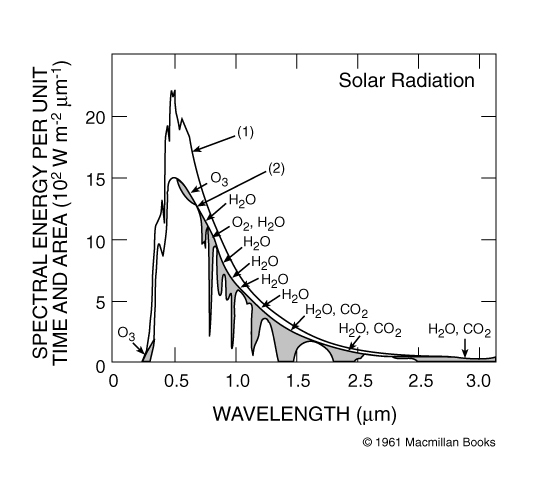
Pa = exp(-talpha,lambda)
= e
-talpha,lambda
= 1/exp(talpha,lambda)
This is Beer's Law.
The optical depth is a function
of wavelength (lambda) and concentration
and path length of absorbers (alpha).
Important atmospheric windows (where absorption is small) include:
0.3 to 0.7 micrometers which accounts for the large proportion of visible radiation that reaches the surface.